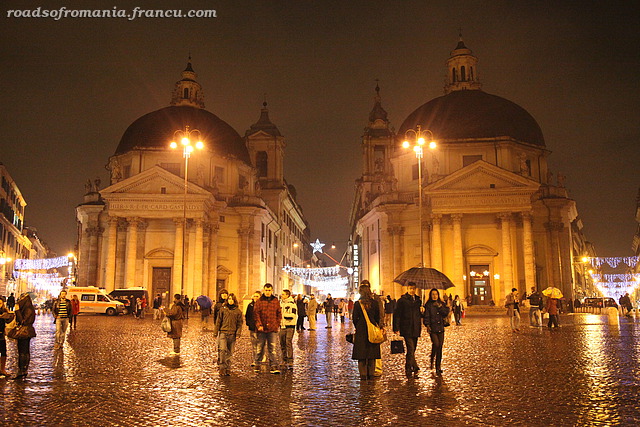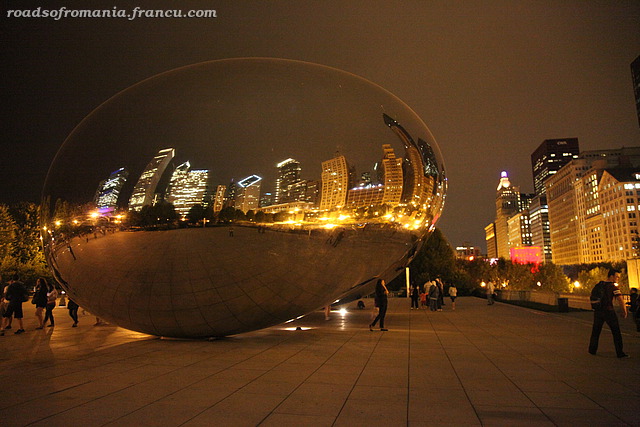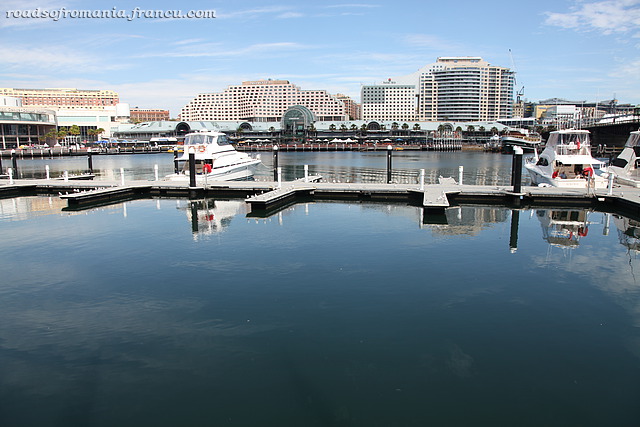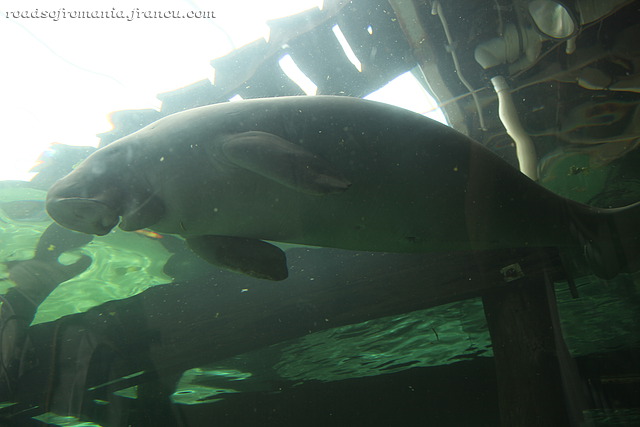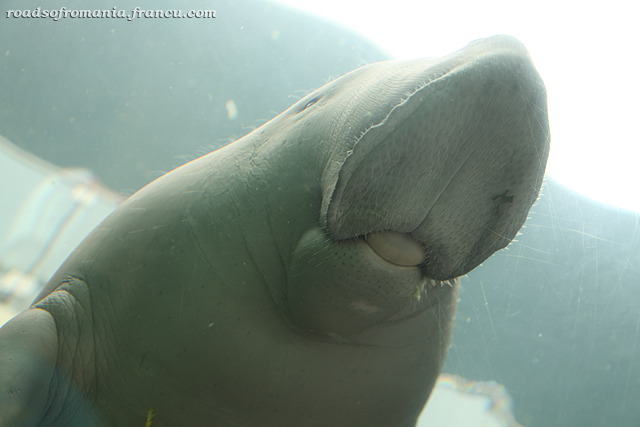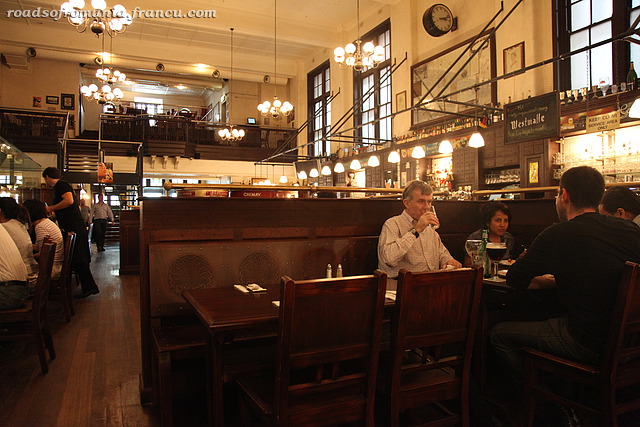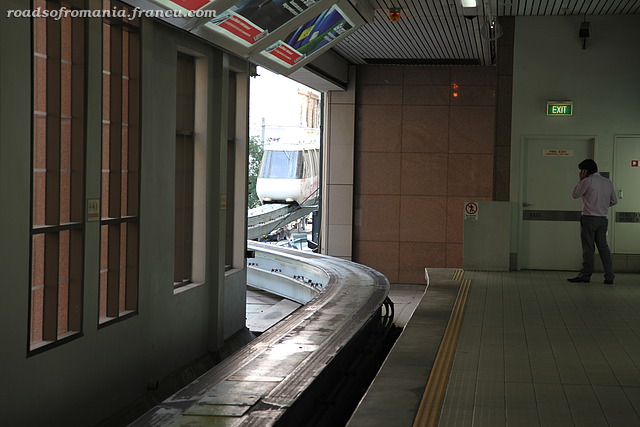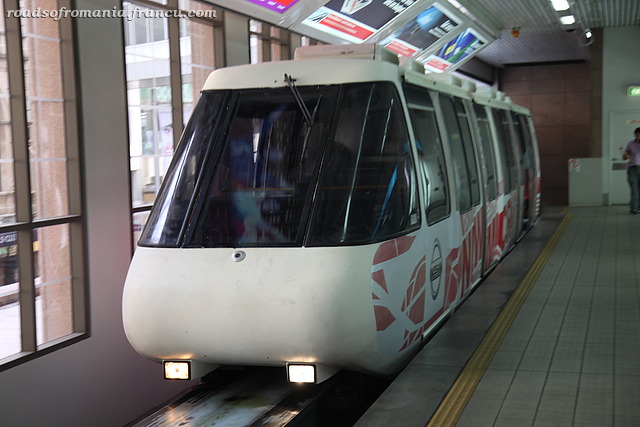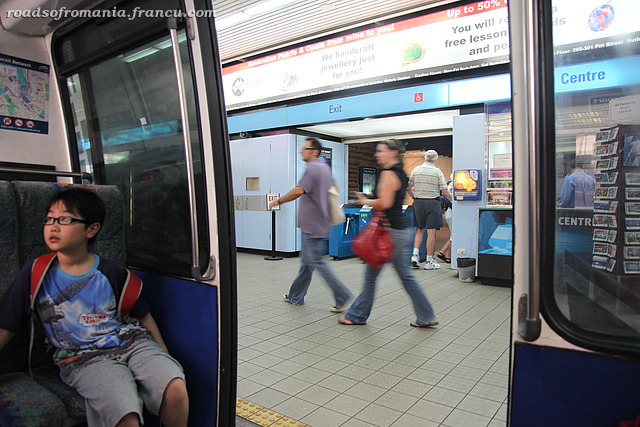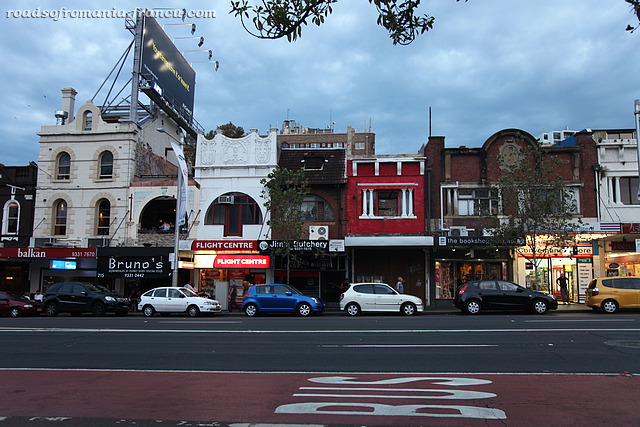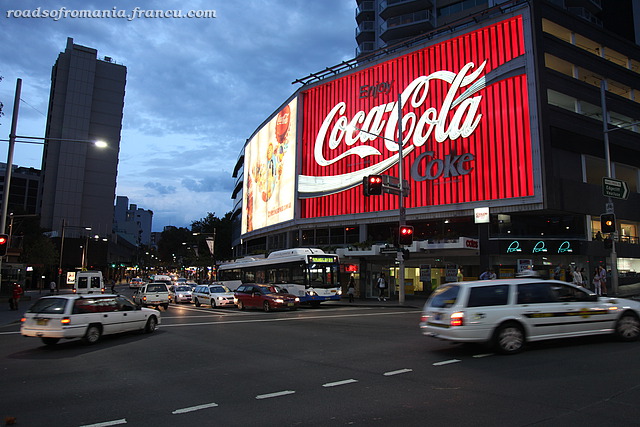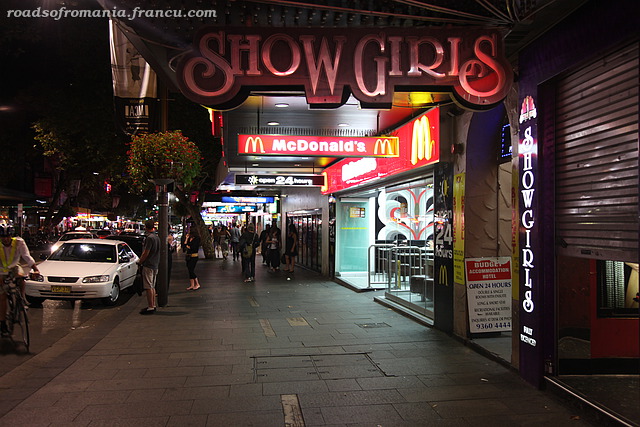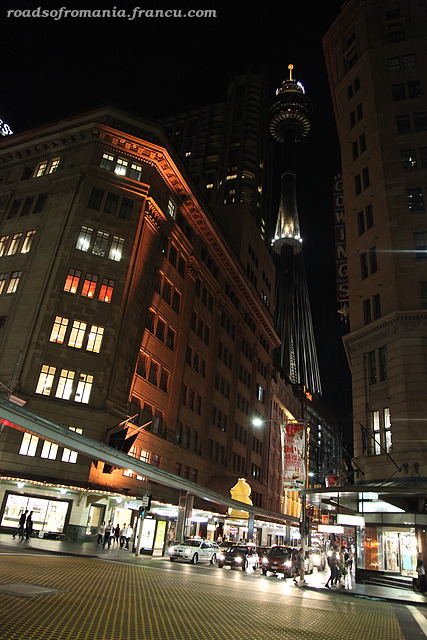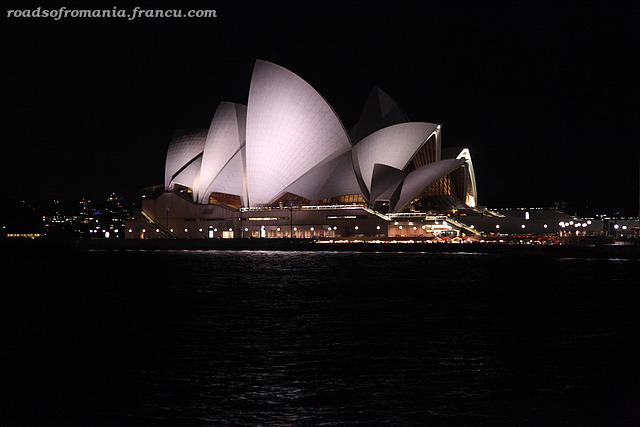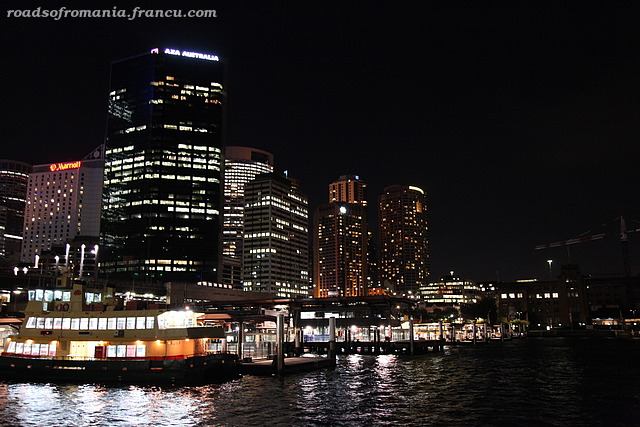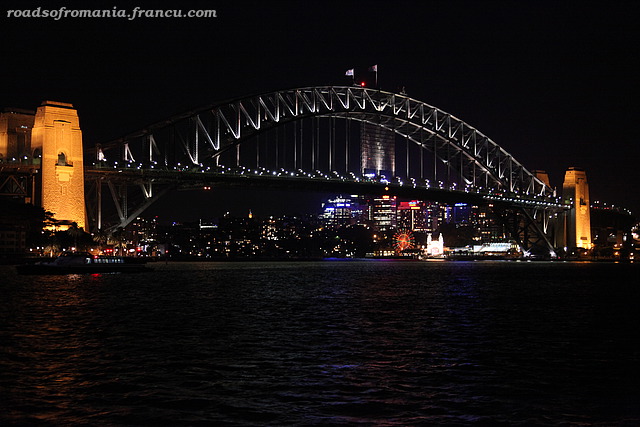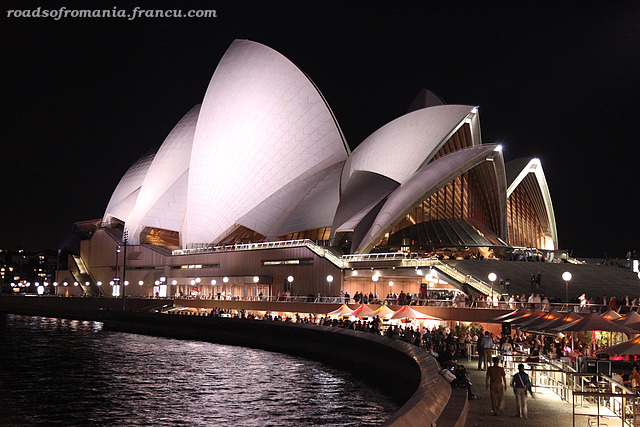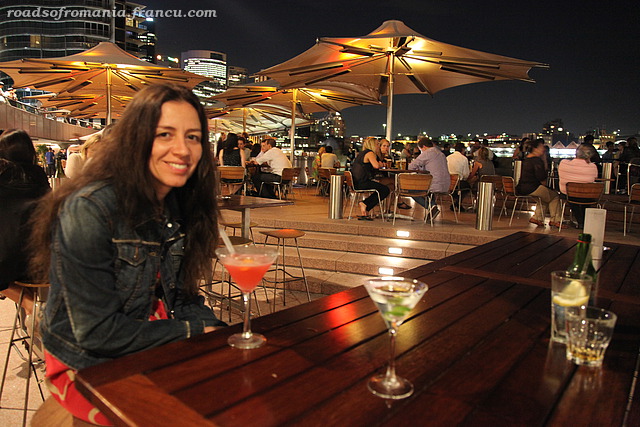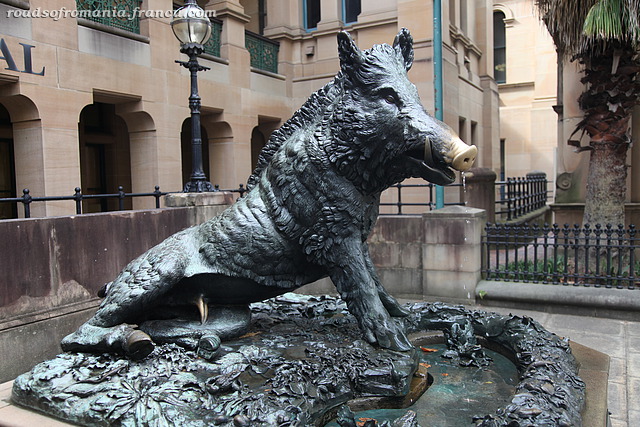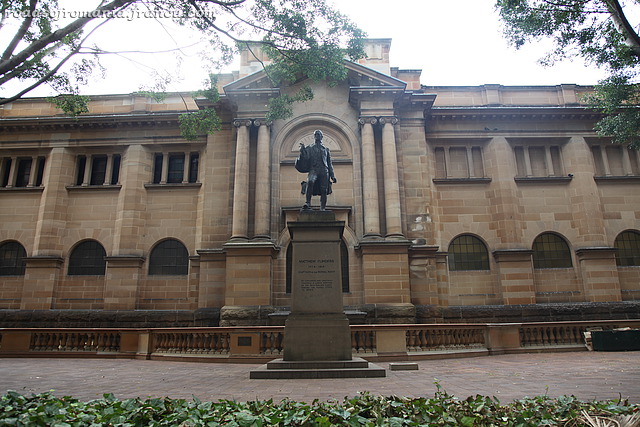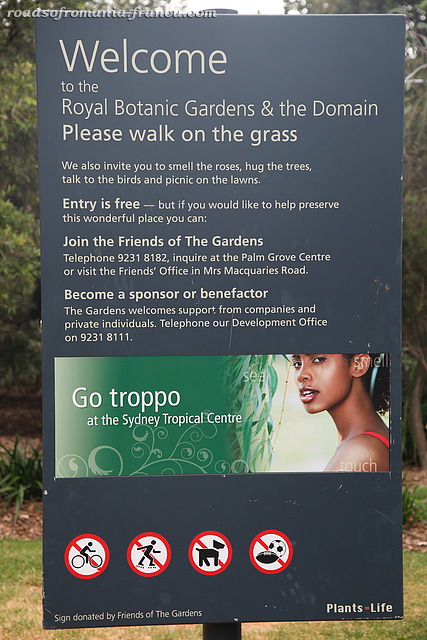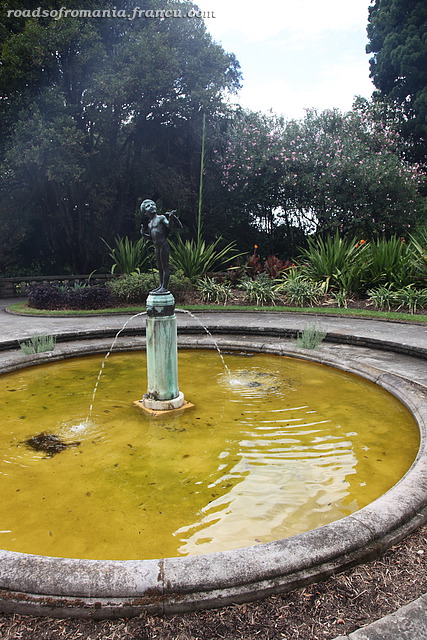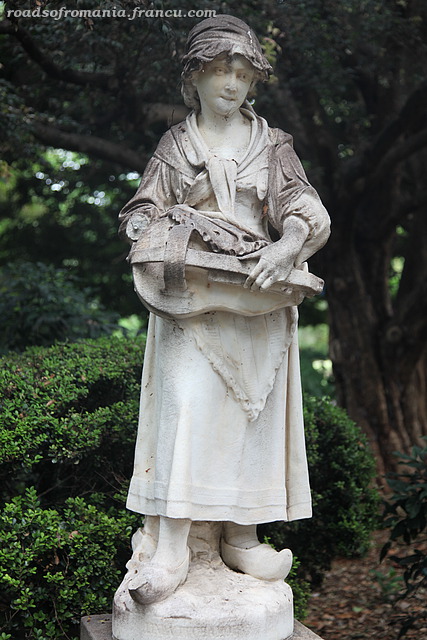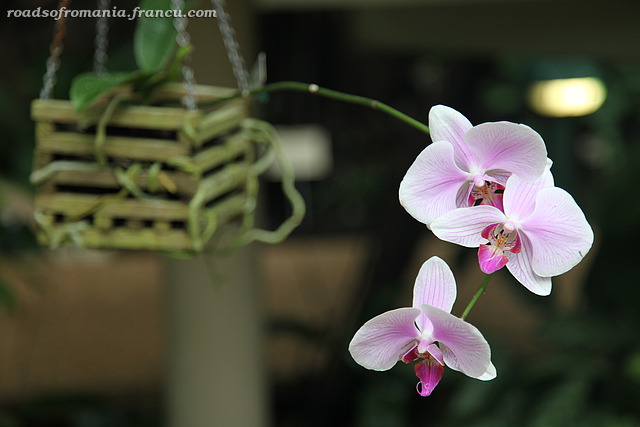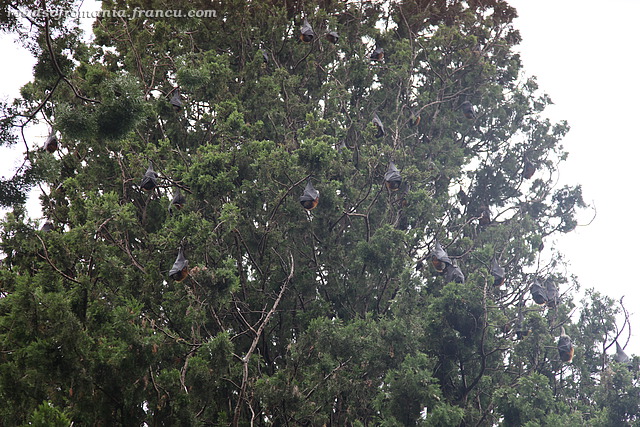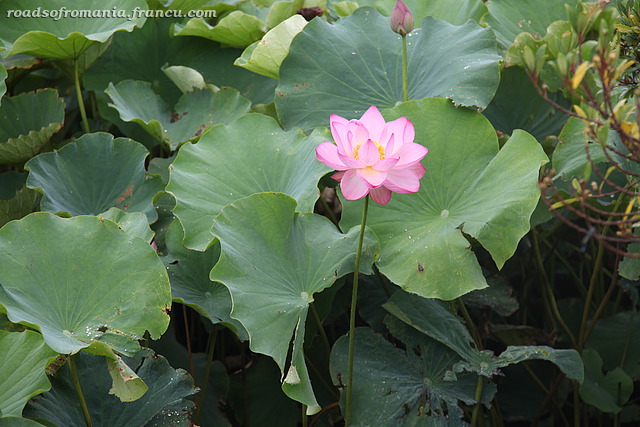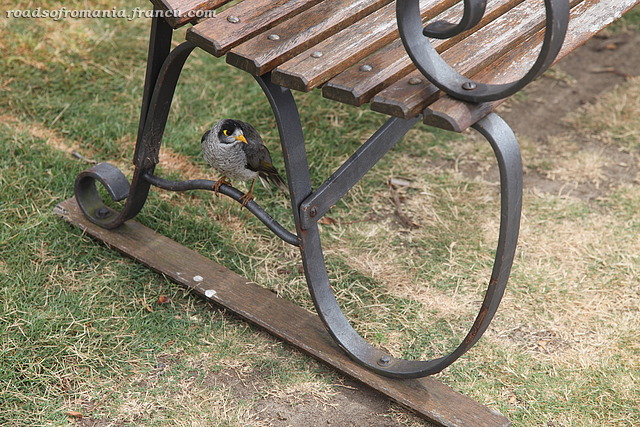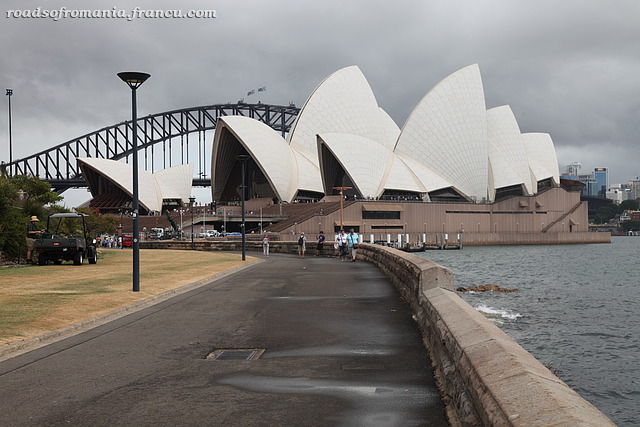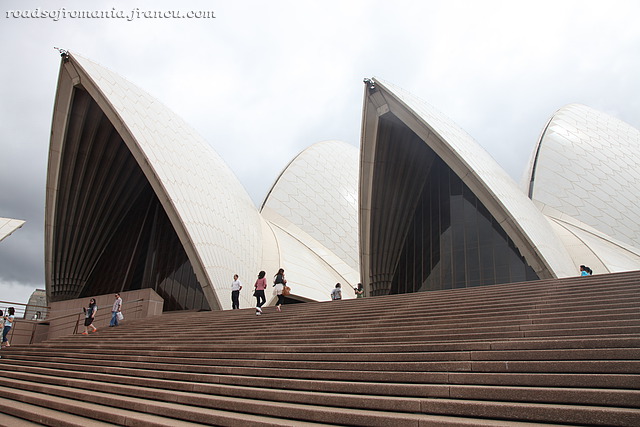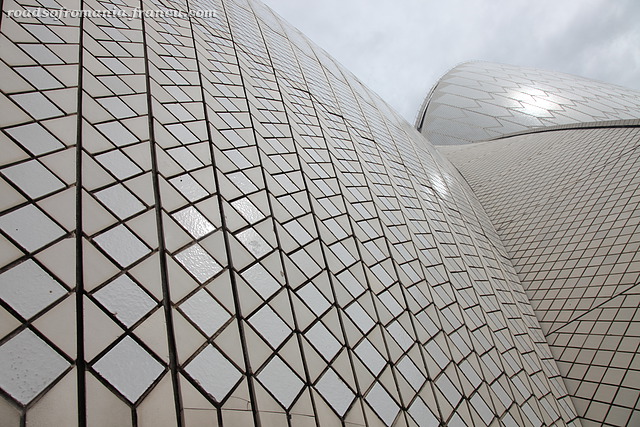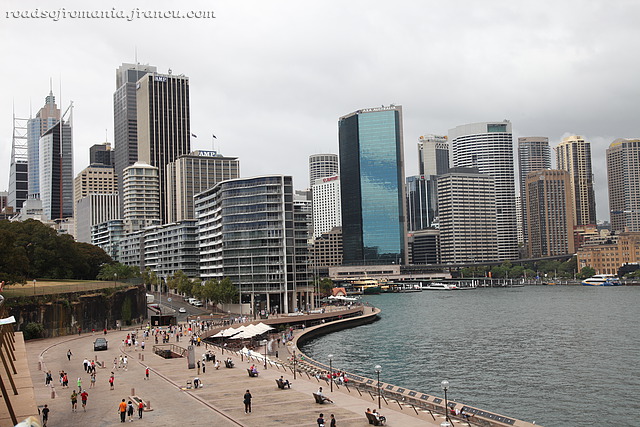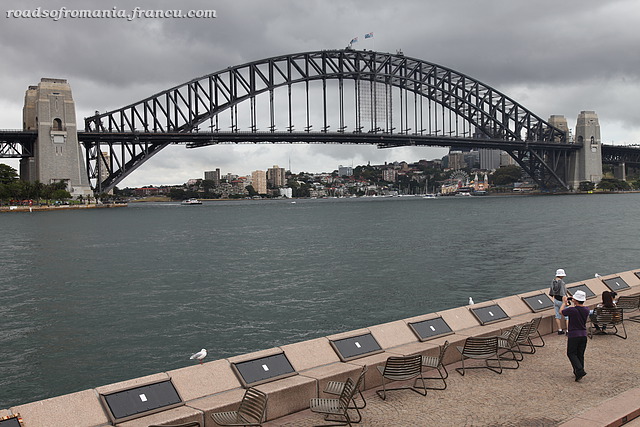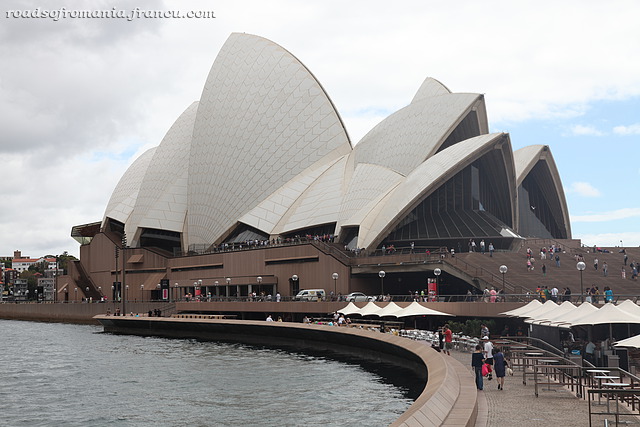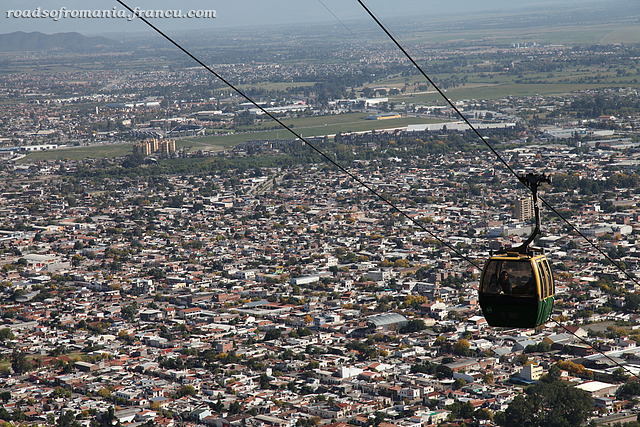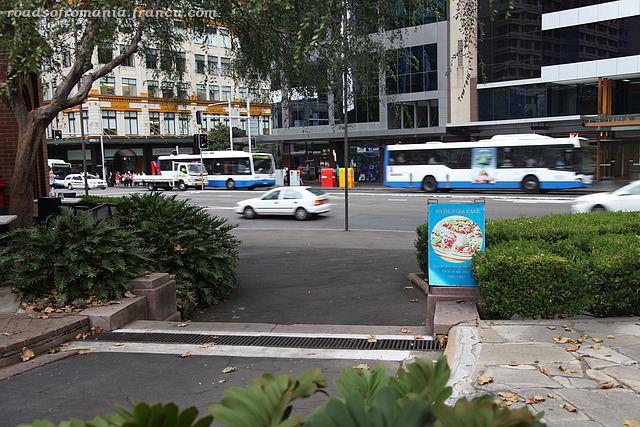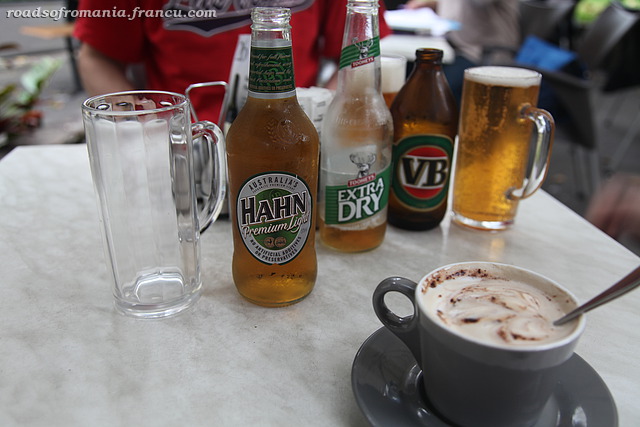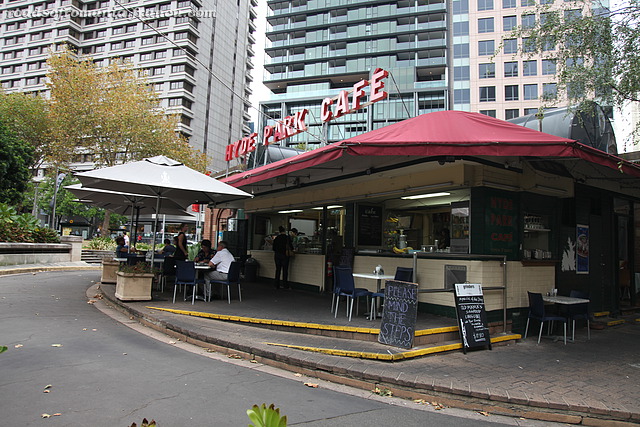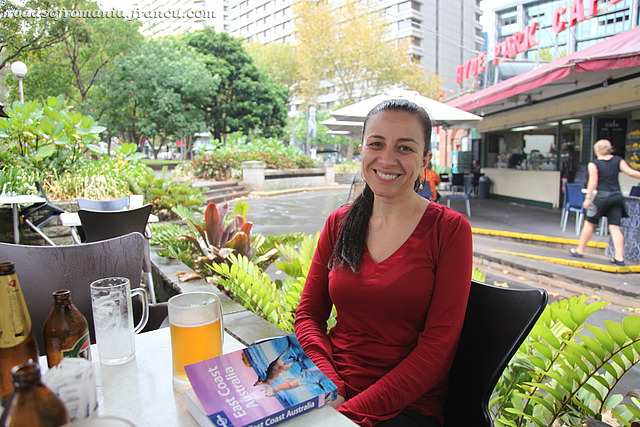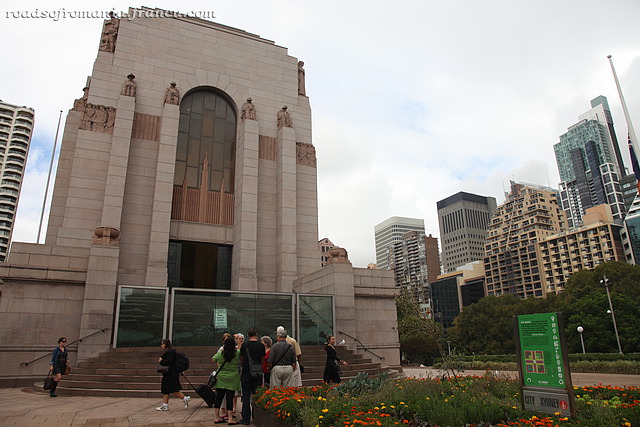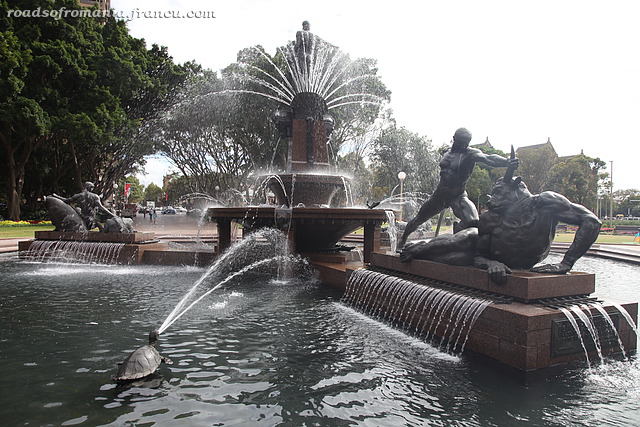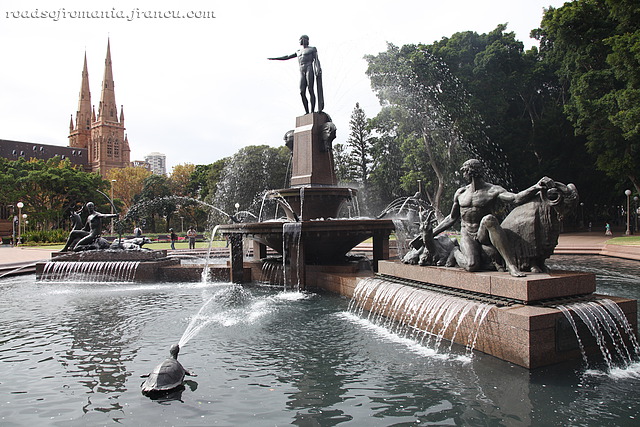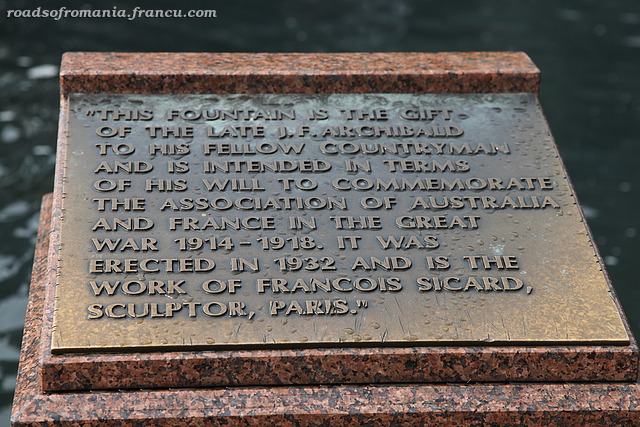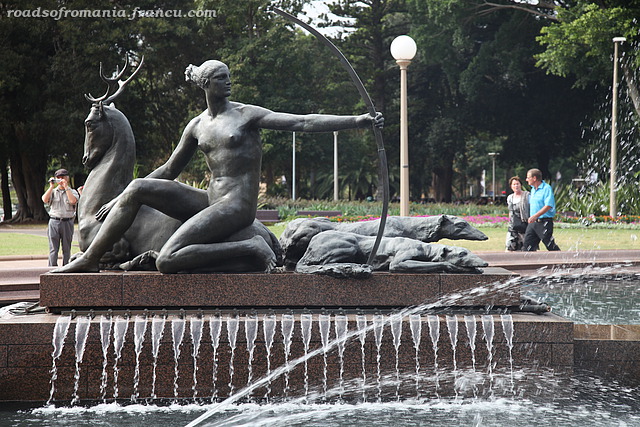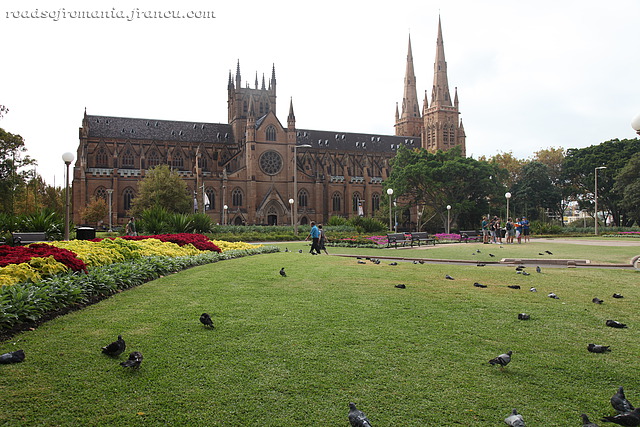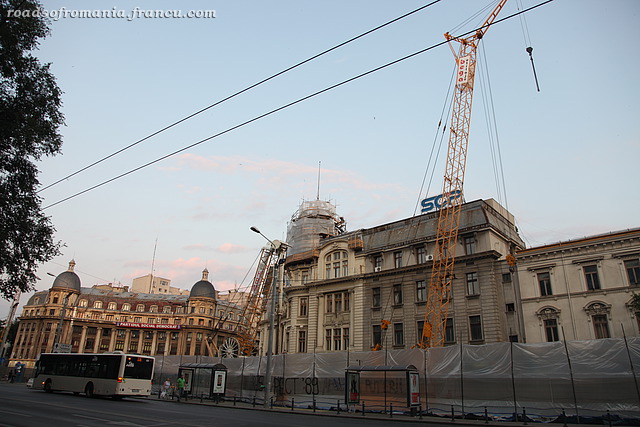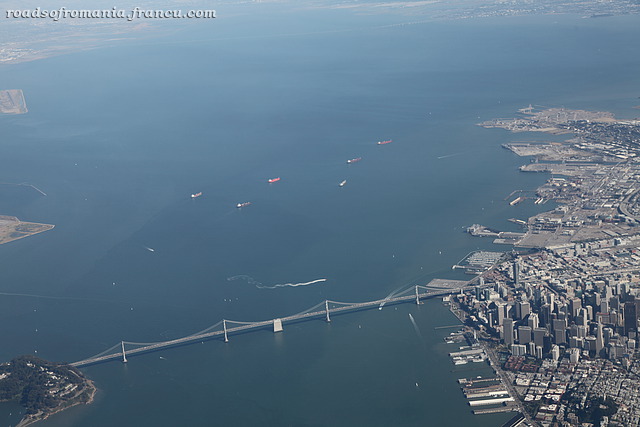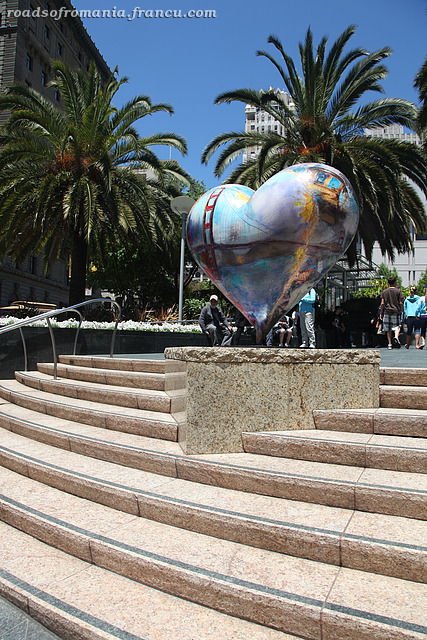The twin churches of Piazza del Popolo, Rome: to the left Santa Maria in Montesanto, built 1662-75 and to the right Santa Maria dei Miracoliright, built 1675-79.
Sydney Day Two
For the second day we planned to explore Sydney’s other harbour by its name Darling Harbour. Not as beautiful or famous as Sydney Harbour, I think that Darling Harbour can be even more interesting than Sydney Harbour for people who have kids because of all the activities that one can do there. Darling Habour is home to Sydney Aquarium, to the Sydney Wildlife World, to the National Maritime Museum, the world’s largest IMAX screen and a lot more. The harbour extends north from Chinatown and then along both sides of a bay called Cockle Bay. Since our hotel was located in Chinatown, Darling Habour was literaly a 5 minutes walk from our room. Our plan for the morning was to visit the Sydney Acquarium and maybe the Wildlife World if we weren’t tired or hungry afterwards. I thought the admission price to the aquarium to be a bit steep ($35/person if I remember correctly). Right when you go in there’s the platypus exhibit but the platypus was nowhere to be seen (bummer!). But I did get to see something I didn’t see before: a dugong which is a large aquatic mammal similar to the manatee. The most impressive exhibit of the aquarium is a series of underwater see-through glass tunnels where sharks, turtles, all sorts of fish, manta rays and the above mentioned dugong swim all around the visitors. Walking through these tunnels was a nice experience.
After having a drink at one of the cafes lining the quays we decided we’re too tired for the Wildlife World and so we went to lunch. Cris wanted to try kangaroo meat and searching on the web I have found one restaurant that was serving it. It was called Belgian Beer Cafe, located in the area known as The Rocks. So we walked to the cafe, thus becoming even hungrier and more tired. Cris got his kangaroo meat but was a bit dissapointed. It tasted like beef he said. I was in a “kangaroos are so cute I couldn’t bear to eat one” mode so I didn’t try it. Living up to their name, the cafe has quite a few Belgian beers so we sampled a few. Which coupled with the big meal and the jet lag sent us back to the hotel for some afternoon sleep. On the way back to the hotel we decided to try the monorail which connects Darling Harbour, Chinatown and the CBD (Central Business District). At AU$5 for a single ride I thought it to be a bit steep for what it offers (8 stations on 3.5km) but we decided to try it once. The track runs about 5.5 meters above the ground so you get some views of the city from high up but they’re really not that great.
After getting some sleep we started toward King Cross, walking along Oxford Street, Sydney’s gay neighborhood, in all appearance a nice street lined with bars, restaurants and clubs. Then we followed Darlinghurst Rd. arriving at the big Coca Cola sign which is considered to be another Sydney icon. King Cross is Sydney’s red light district. I don’t know how it might have looked in the past but nowadays it looks like a mixuture of strip joints and sex shops and trendy cafes and restaurants. It didn’t seem dangerous but we only hanged around until 11 in the evening or so. This area is also backpacker central, with a few hostels and budget accommodation available, especially along Victoria St.
To be continued …
Darling Harbour
Sydney Acquarium
The dugong
Belgian Beer Cafe
The Monorail
Oxford Street
Coca cola sign
King Cross
Sydney Day One, last part
There isn’t much left to say about the first day. After resting for a few hours we went out of our hotel which was located in Chinatown and headed again for Sydney Harbour with the intention of seeing the Opera House at night. This time we followed George Street all the way to the water. The Opera House was beautifully lit, looking like it captured all the light in the world and was now sailing quietly into the night. We stopped for a drink at the Opera Bar and then headed back to the hotel to call it a night.
To be continued …
Sydney Day One
As we exit Hyde Park I stop to take a few shots of the Sydney Tower before continuing on Macquarie Street on our way to the Royal Botanic Gardens and Sydney’s Harbour. Macquarie Street is lined with what looks like old public buildings, from the Hyde Park Barracks Museum and Mint Museum to Sydney Hospital and the State Library. In front of the Sydney Hospital we run into a copy of the Porcellino, a gift of the people of Florence to Sydney (later I read on wikipedia that there are several copies of the famed boar around the world).
The Royal Botanic Gardens were established in 1816. I liked the sign at the entrance that read “Please walk on the grass. We also invite you to smell the roses, hug the trees, talk to the birds and picnic on the lawn”. This was so different from the attitude in my home city of Bucharest where until two years ago you weren’t allowed to step on the grass in public parks. The Gardens seemed very lovely and I would have enjoyed them more if not for the light rain, stopping and starting every few minutes. At some point Cris pointed to some large black fruits hanging from branches and a moment later we realized that they were in fact huge bats, sleeping upside down, clinging to a branch with their feet, with their wings wrapped around them. The Royal Botanic Gardens are home to a colony of over 22,000 flying-foxes, a species of large bats, weighing up to 1 kg, with a wing span which may exceed one meter. These have settled in the garden some years ago, possibly in response to the loss of their native habitat.
The rain had eased back and it was slowly clearing by now so we walked along the waterfront and got our first glimpse of the Opera House and Harbour Bridge. If I were to ask people from all over to name a famous building from Sydney I’m willing to bet that 99.99% would name the Opera House. Sydney Opera House is to the city what the Eiffel Tower is to Paris, the Colloseum to Rome or the Empire State Building is to New York City. In my opinion what makes the building so unforgettable is without doubt its distinct and innovating architecture along with its great location on the tip of one of the world’s pretties harbours. The Opera House is the design of the Danish architect Jørn Utzon who won the competition design in 1957. Construction of the building started in 1959 and ended in 1973 and was not without controversy. The original cost estimate was $7 million while the completion date was set by the government to be 26 January 1963; in reality the building was finished 10 years later in 1973 at a cost of $102 million. Jørn Utzon ultimately resigned the project and the interior was completed by an Australian design team. The most striking architectural element is the roof, which is made of precast concrete covered in granite tiles imported from Sweden. And finally, one last piece of information and I promise to move on, Sydney’s Opera House was made a UNESCO World Heritage Site in 2007.
Having circled the building we moved on to explore Circular Quay. Our intention was to find a place to eat in the area known as “The Rocks”, which was just a short walk away. Circular Quay is the hub of the city’s ferry system, from where all ferries depart to travel to various Sydney suburbs. Buses and trains also connect here. The area around the actual ferry terminal and piers is full of cafes, restaurants, kiosks selling everything from magazines to snack foods. The crowd of tourists is entertained by various street performers. We walked along the water taking pictures and headed to “The Rocks”, which is the site of Australia’s oldest settlement. The area was established shortly after the colony’s formation in 1788. The original buildings were made of sandstone, from which the area derives its rocky name. These days “The Rocks” is home to hotels, boutiques, bars and restaurants, a draw for tourists and locals alike. We went from door to door reading menus and finally picked a restaurant called “bel mondo”. Not much of an atmosphere at lunchtime, but the food was excellent. The delicious food came with a price though as this was an expensive place, costing as much as the same dining experience in NY. After lunch we decided it was time to check in at the hotel so we made our way back. I couldn’t wait to unpack, take a shower and to rest up for few hours.
To be continued …
Sydney Tower
Il Porcellino
Sydney Library
Royal Botanic Gardens
Bats
Opera House
Circular Quay
Harbour Bridge
Opera House
The view from San Bernardo hill, Salta, Argentina
Sydney Day One, Arrival
Growing up in communist Romania, where average people weren’t allowed to have a passport and getting out of the country was heavily restricted, I never imagined myself visiting Australia. My wildest dreams took me only as far as Paris and even that I didn’t dare to hope. And yet, after a long layover in London, on a cold February day of year 2011 I took off in a plane bound for Bangkok where I was to change planes and continue on to Sydney. London was visible low below us, like a carpet of lights. The first part of the flight was 10h and a half out of which I managed to sleep for 7h. I’m pretty good at sleeping in planes, always have been. Then followed the 2h layover in Bangkok and a pleasant surprise: we have been upgraded to business class for the next leg of the flight. After sleeping for another 3h – I told you I’m good 🙂 – I spent the rest of my time reading from the LP East Coast Australia guide, fine-tunning the planning for the next few days. Before leaving Bucharest I have followed the news about the flooding of the East Coast changing the itinerary accordingly, such that we won’t run into any problems. But now the flights and hotels were booked so all we could do was hope for the best.
Right before landing I was witness to one of the most exquisite sunrises. The colors were a mixture of oranges and pinks bordered in the lower part by the dark grey clouds. Here and there were spots of a glorious blue sky, a promise of a clear day (an unkept promised as the day didn’t turn out that way). Passing through customs we had to line our luggage in a row and wait for the sniffing dog to do its job. The custome’s officer asked us where are we coming from and when he heard Romania he asked: “Bucharest? Timisoara?” Bucharest we said but I was quite impressed that he had heard of Timisoara. We took a taxi to the hotel. Driving in Australia is on the left like most of the Commonwealth and that in itself was interesting enough to watch on our way to the city center. It was 7.30 in the morning and Sydney was slowly coming alive. I saw many biciclists riding in the middle of the traffic and I wondered if the laws are similar to San Francisco where byciclists can ride the car lanes and have the right of way. At the hotel we were informed that our room will be ready at 2.00 PM so we left the luggage, took the camera and a map and headed out to explore the city. In front of the hotel I took out the map and tried to orient myself and 20 second later a young guy stopped and helped us with directions to Hyde Park. Wow. I was impressed. The locals must indeed be as friendly as everyone says. We walked to Hyde Park and as soon as we hit the corner of the park we decided to take a break (after all we have walked for a total of … four blocks! 🙂 ). So we stopped at the Hyde Park Cafe and started to try all the Australian beers on the menu: Victoria Bitter, Toohey’s, Crown Lager, Hahn Premium Light. All around us people were serving breakfast and drinking coffee but being on a different time zone we didn’t feel bad drinking beer at 8.00 in the morning. And soon we were happy that we stopped for a break because as soon as the beer arrived it started to rain. A light rain looking like it materialized from the humidity. At times it would stop and then it would restart going from nothing to a light spray and then back to nothing in a second like someone was playing with a faucet. After getting refills for beers we waited for a break in the curtain of rain and headed along to explore Hyde Park. We passed the Anzac War Memorial, a design of C. Bruce Dellit, built in 1934 to commemorate the Australian Imperial Force of World War I. To its north side there’s a rectangular “Lake of Reflections” pool flanked by rows of poplars. We spent some time watching the birds around the pool and then followed a tree lined avenue to the Archibald Fountain designed by François-Léon Sicard and donated by J.F. Archibald in 1932 in honour of Australia’s contribution to World War I in France.
To be continued …
Corner of Hyde Park
Australian beers
Hyde Park Cafe
Yours truly tired after the long flight
Anzac Memorial
Anzac Memorial and the “Lake of Reflections”
The Archibald Fountain
St. Mary’s Cathedral
Today’s photo shows the construction work to the underground parking lot in the University Square, Bucharest.
It happened quicker than I thought 🙁 I didn’t take any pictures today, despite carrying my heavy camera with me all day long. I guess I just didn’t feel inspired. But I wanted to post something for the day, so I chose a photo taken a few days before, on July 1st, while I was taking off from San Francisco. In the photo you can see part of downtown, the portion of Bay Bridge up to the Yerba Buena Island and of course the famous San Francisco Bay.
San Francisco’s Union Square
Thursday June 30th I was out and about downtown San Francisco on a last minute shopping spree before flying back to Romania. The weather was gorgeous, even more so considering that this was one of the few sunny days that the month of June shared with San Francisco. The weather this past month was as the saying goes “The coldest winter I ever spent was a summer in San Francisco”, one of the funniest (and true) words that Mark Twain never said. But Thusday was sunny and warm and it felt so good that it inspired me to take a break from shopping and enjoy a lemonade in Union Square, a small plaza in downtown San Francisco. The heart sculpture is part of an annual public art installation started in 2004 by the San Francisco General Hospital Foundation for the purpose of fundraising. It was inspired by the CowParade and by Tony Bennett’s Song “I left my heart in San Francisco”.
